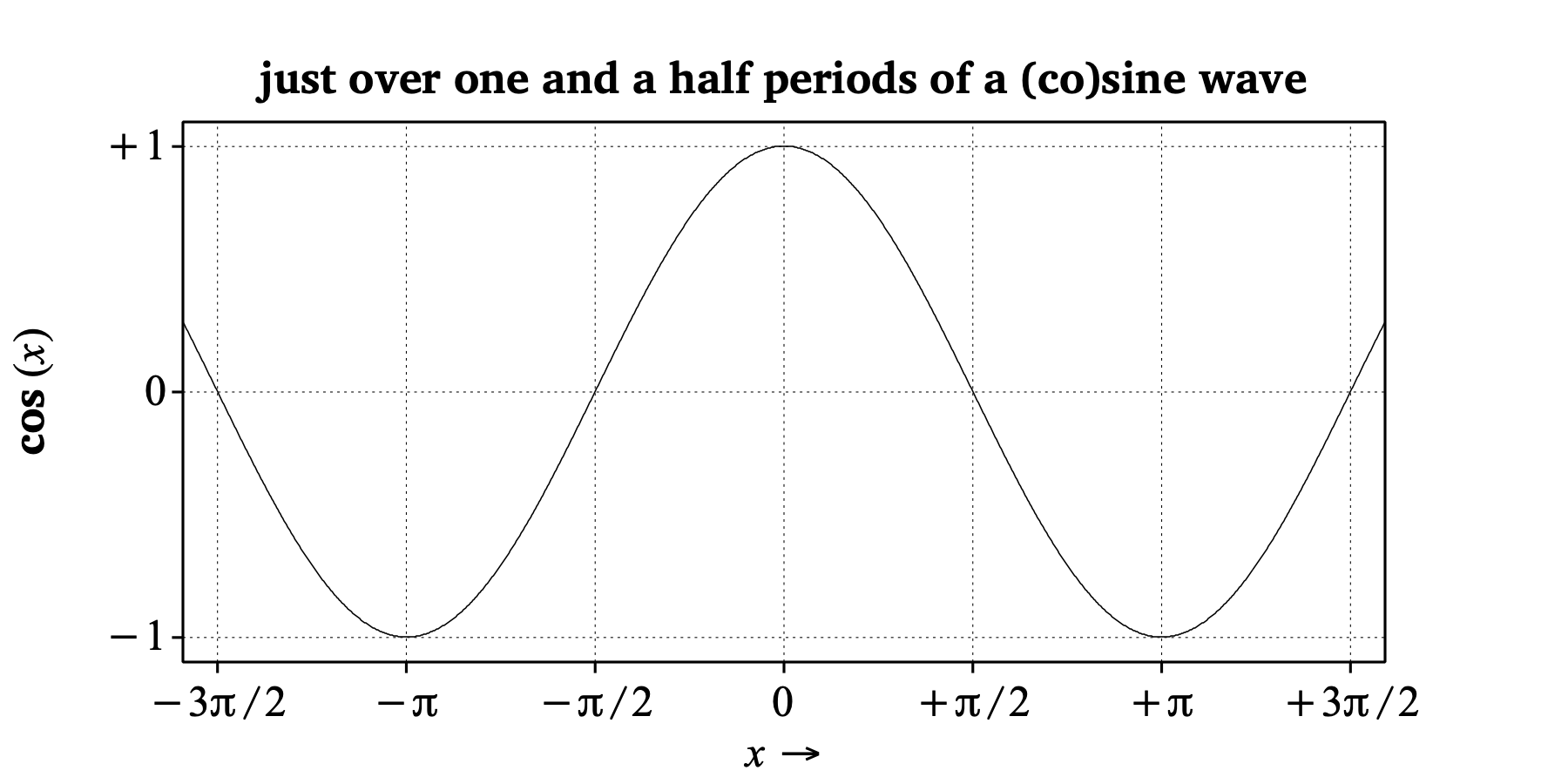
|
A function that can be used in Formulas.
cos (x)
x. Axes: -5, 5, -1.1, 1.1
Draw inner box
Draw function: -5, 5, 1000, ~ cos (x)
One mark bottom: -3*pi/2, "no", "yes", "yes", "\-m3%\pi/2"
One mark bottom: -pi, "no", "yes", "yes", "\-m%\pi"
One mark bottom: -pi/2, "no", "yes", "yes", "\-m%\pi/2"
One mark bottom: 0, "no", "yes", "yes", "0"
One mark bottom: pi/2, "no", "yes", "yes", "+%\pi/2"
One mark bottom: pi, "no", "yes", "yes", "+%\pi"
One mark bottom: 3*pi/2, "no", "yes", "yes", "+3%\pi/2"
One mark left: -1, "no", "yes", "yes", "\-m1"
One mark left: 0, "no", "yes", "yes", "0"
One mark left: 1, "no", "yes", "yes", "+1"
Text bottom: "yes", "%x \->"
Text left: "yes", "##cos# (%x)"
Text top: "no", "##just over one and a half periods of a (co)sine wave"

This picture illustrates the following properties of the cosine function:
cos (x) is zero for all values of x that are odd multiples of π/2.cos (x) are −1 and +1.cos (x) is −1 or +1 wherever x is an integer multiple of π.cos (x+2π) = cos (x).cos (−x) = cos (x).cos (π/2−x) = − cos (x); in other words, if you take the cosine curve and rotate it by 180 degrees around the point (π/2, 0), then you get the same curve again.A cosine wave is a special case of the more general sine wave that is given by y = sin (x + φ), where φ (an additive constant called the initial phase) is π/2.
© Paul Boersma 2023